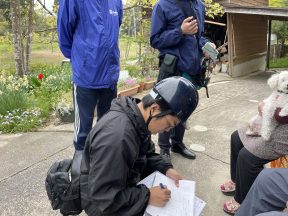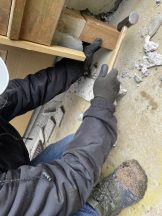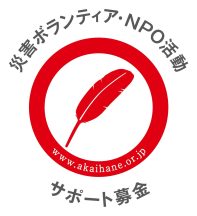 Since February, Habitat Japan has provided building consultations for those with damaged homes thanks to our partnership with volunteer architects in areas like Kanazawa. With many evacuees with worries like “Can I continue living in my home if I repair it”, or “Is there a way to repair this? Or should I demolish it?”, we hope to help alleviate homeowners’ anxieties with the objective advice provided by professional architects. Through these building consultations, we help residents make informed decisions and expand their housing options post-disaster.
Since February, Habitat Japan has provided building consultations for those with damaged homes thanks to our partnership with volunteer architects in areas like Kanazawa. With many evacuees with worries like “Can I continue living in my home if I repair it”, or “Is there a way to repair this? Or should I demolish it?”, we hope to help alleviate homeowners’ anxieties with the objective advice provided by professional architects. Through these building consultations, we help residents make informed decisions and expand their housing options post-disaster.

In Monzen-machi, the demolition of eligible houses using government funding has gradually begun. In the case of disaster such as the Noto Peninsula Earthquake, homes that are judged as half-destroyed or worse and are certified with a disaster certificate are eligible for demolition at public expense. The other day we received a call from someone who wanted to repair their home and continue living there if possible, but was upset when their disaster certificate judged their home as “half-destroyed” and became distressed, worried they could no longer return to their home. Initially, through “emergency risk assessment”, buildings were evaluated and stuck with a green, yellow, or red flier designating their safety. These initial judgements, made immediately after the disaster, were meant to warn people of potential dangers, with the main objective of minimizing casualties. They differ from disaster certificates, which detail the extent of structural damage a building has sustained. The differences between these two documents and their results can be hard to understand by laymen, and often lead to misunderstandings by homeowners. One resident who consulted with us said *I thought my house was leaning, but I was reassured it was okay after an architect looked at it. Before that, I was scared that I wouldn’t be able to return living there.” “I didn’t want to demolish it. It’s the home I’ve cared for up until now, so I want to think hard on all of my repair options before having to resort to destroying it.” We expect that the need for building consultations on whether to repair or demolish homes will begin to increase in other regions as well. As we continued holding building consultations, we found that some homes were in danger of being damaged further in the event of aftershocks or that parts of homes might be susceptible to further collapse, which could result in secondary casualties for homeowners and volunteers who are cleaning up homes.
 To mitigate such dangers as much as possible, the Network of Volunteer Architects employ emergency measures to address the progression of potential dangers for the homes for which we offer building consultations. Combining the perspectives of architects and the skills of carpenters, measures are being taken to eliminate risks of secondary casualties in and around homes by re-fastening exterior walls, reinforcing warped support beams with metal fittings, and refitting mortise and tenon joints. The Network of Volunteer Architects has launched a crowdfunding campaign (Japanese) to expand their building consultation services to other areas and to implement more emergency safety measures. So as many people may return to safe and decent homes as soon possible, Habitat Japan will continue working with partners like the Network of Volunteer Architects and supporting their crowdfunding efforts so they may help address needs and worries of evacuees through building consultation.
To mitigate such dangers as much as possible, the Network of Volunteer Architects employ emergency measures to address the progression of potential dangers for the homes for which we offer building consultations. Combining the perspectives of architects and the skills of carpenters, measures are being taken to eliminate risks of secondary casualties in and around homes by re-fastening exterior walls, reinforcing warped support beams with metal fittings, and refitting mortise and tenon joints. The Network of Volunteer Architects has launched a crowdfunding campaign (Japanese) to expand their building consultation services to other areas and to implement more emergency safety measures. So as many people may return to safe and decent homes as soon possible, Habitat Japan will continue working with partners like the Network of Volunteer Architects and supporting their crowdfunding efforts so they may help address needs and worries of evacuees through building consultation.
 ※Habitat Japan's volunteering for the Noto Peninsula is made possible by the Akai Hane “Disaster Relief Volunteer/NPO Activity Support Fund”.
※Habitat Japan's volunteering for the Noto Peninsula is made possible by the Akai Hane “Disaster Relief Volunteer/NPO Activity Support Fund”.
